Cover
Springer Series in Statistics
Inequalities: Theory of Majorization and Its Applications (Second edition)
Copyright
9780387400877
Preface and Acknowledgments from the First Edition
History and Preface of the Second Edition
Overview and Roadmap
Contents
Basic Notation and Terminology
Part I: Theory of Majorization
1 Introduction
A Motivation and Basic Definitions
B Majorization as a Partial Ordering
C Order-Preserving Functions
D Various Generalizations of Majorization
2 Doubly Stochastic Matrices
A Doubly Stochastic Matrices and Permutation Matrices
B Characterization of Majorization Using Doubly Stochastic Matrices
C Doubly Substochastic Matrices and Weak Majorization
D Doubly Superstochastic Matrices and Weak
Majorization
E Orderings on \mathscr{D}
F Proofs of Birkhoff's Theorem and Refinements
G Classes of Doubly Stochastic Matrices
H More Examples of Doubly Stochastic and Doubly Substochastic Matrices
I Properties of Doubly Stochastic Matrices
J Diagonal Equivalence of Nonnegative Matrices and Doubly Stochastic Matrices
3 Schur-Convex Functions
A Characterization of Schur-Convex Functions
B Compositions Involving Schur-Convex Functions
C Some General Classes of Schur-Convex Functions
D Examples I. Sums of Convex Functions
E Examples II. Products of Logarithmically Concave (Convex) Functions
F Examples III. Elementary Symmetric Functions
Symmetrization of Convex and Schur-Convex Functions: Muirhead’s Theorem
H Schur-Convex Functions on \mathscr{D} and Their Extension to \mathscr{R}^n
I Miscellaneous Specific Examples
J Integral Transformations Preserving
Schur-Convexity
K Physical Interpretations of Inequalities
4 Equivalent Conditions for Majorization
A Characterization by Linear Transformations
B Characterization in Terms of Order-Preserving
Functions
C A Geometric Characterization
D A Characterization Involving Top Wage Earners
5 Preservation and Generation of Majorization
A Operations Preserving Majorization
B Generation of Majorization
C Maximal and Minimal Vectors Under Constraints
D Majorization in Integers
E Partitions
F Linear Transformations That Preserve Majorization
6 Rearrangements and Majorization
A Majorizations from Additions of Vectors
B Majorizations from Functions of Vectors
C Weak Majorizations from Rearrangements
D L-Superadditive Functions---Properties and Examples
E Inequalities Without Majorization
F A Relative Arrangement Partial Order
Part II: Mathematical Applications
7 Combinatorial Analysis
A Some Preliminaries on Graphs, Incidence Matrices, and Networks
B Conjugate Sequences
C The Theorem of Gale and Ryser
D Some Applications of the Gale–Ryser Theorem
E s-Graphs and a Generalization of the
Gale–Ryser Theorem
F Tournaments
G Edge Coloring in Graphs
H Some Graph Theory Settings in Which Majorization Plays a Role
8 Geometric Inequalities
A Inequalities for the Angles of a Triangle
B Inequalities for the Sides of a Triangle
C Inequalities for the Exradii and Altitudes
D Inequalities for the Sides, Exradii, and Medians
E Isoperimetric-Type Inequalities for Plane Figures
F Duality Between Triangle Inequalities and
Inequalities Involving Positive Numbers
G Inequalities for Polygons and Simplexes
9 Matrix Theory
A Notation and Preliminaries
B Diagonal Elements and Eigenvalues of a Hermitian Matrix
C Eigenvalues of a Hermitian Matrix and Its Principal Submatrices
D Diagonal Elements and Singular Values
E Absolute Value of Eigenvalues and Singular Values
F Eigenvalues and Singular Values
G Eigenvalues and Singular Values of A, B,and A + B
H Eigenvalues and Singular Values of A, B, and AB
I Absolute Values of Eigenvalues and Row Sums, and Variations of Hadamard’s Inequality
J Schur or Hadamard Products of Matrices
K
Diagonal Elements and Eigenvalues of a Totally Positive Matrix and of an M-Matrix
L Loewner Ordering and Majorization
M Nonnegative Matrix-Valued Functions
N Zeros of Polynomials
O Other Settings in Matrix Theory Where Majorization Has Proved Useful
10 Numerical Analysis
A Unitarily Invariant Norms and Symmetric Gauge Functions
B Matrices Closest to a Given Matrix
C Condition Numbers and Linear Equations
D Condition Numbers of Submatrices and Augmented Matrices
E Condition Numbers and Norms
Part III: Stochastic Applications
11 Stochastic Majorizations
A Introduction
B Convex Functions and Exchangeable Random Variables
C Families of Distributions Parameterized to Preserve Symmetry and Convexity
D Some Consequences of the Stochastic Majorization E_1(P_1)
E Parameterization to Preserve Schur-Convexity
F Additional Stochastic Majorizations and Properties
G Weak Stochastic Majorizations
H Additional Stochastic Weak Majorizations and Properties
I Stochastic Schur-Convexity
12 Probabilistic, Statistical, and Other Applications
A Sampling from a Finite Population
B Majorization Using Jensen's Inequality
C Probabilities of Realizing at Least k of n Events
D Expected Values of Ordered Random Variables
E Eigenvalues of a Random Matrix
F Special Results for Bernoulli and Geometric Random Variables
G Weighted Sums of Symmetric Random Variables
H Stochastic Ordering from Ordered Random
Variables
I Another Stochastic Majorization Based on Stochastic Ordering
J Peakedness of Distributions of Linear Combinations
K Tail Probabilities for Linear Combinations
L Schur-Concave Distribution Functions and Survival
Functions
M Bivariate Probability Distributions with Fixed
Marginals
N Combining Random Variables
O Concentration Inequalities for Multivariate
Distributions
P Miscellaneous Cameo Appearances of Majorization
Q Some Other Settings in Which Majorization
Plays a Role
13 Additional Statistical Applications
A Unbiasedness of Tests and Monotonicity of Power Functions
B Linear Combinations of Observations
C Ranking and Selection
D Majorization in Reliability Theory
E Entropy
F Measuring Inequality and Diversity
G Schur-Convex Likelihood Functions
H Probability Content of Geometric Regions for Schur-Concave Densities
I Optimal Experimental Design
J Comparison of Experiments
Part IV: Generalizations
14 Orderings Extending Majorization
A Majorization with Weights
B Majorization Relative to d
C Semigroup and Group Majorization
D Partial Orderings Induced by Convex Cones
E Orderings Derived from Function Sets
F Other Relatives of Majorization
G Majorization with Respect to a Partial Order
H Rearrangements and Majorizations for Functions
15 Multivariate Majorization
A Some Basic Orders
B The Order-Preserving Functions
C Majorization for Matrices of Differing Dimensions
D Additional Extensions
E Probability Inequalities
Part V: Complementary Topics
16 Convex Functions and Some Classical Inequalities
A Monotone Functions
B Convex Functions
C Jensen's Inequality
D Some Additional Fundamental Inequalities
E Matrix-Monotone and Matrix-Convex Functions
F Real-Valued Functions of Matrices
17 Stochastic Ordering
A Some Basic Stochastic Orders
B Stochastic Orders from Convex Cones
C The Lorenz Order
D Lorenz Order: Applications and Related Results
E An Uncertainty Order
18 Total Positivity
A Totally Positive Functions
B Pólya Frequency Functions
C Pólya Frequency Sequences
D Total Positivity of Matrices
19 Matrix Factorizations, Compounds, Direct Products, and M-Matrices
A Eigenvalue Decompositions
B Singular Value Decomposition
C Square Roots and the Polar Decomposition
D A Duality Between Positive Semidefinite Hermitian Matrices and Complex Matrices
E Simultaneous Reduction of Two Hermitian Matrices
F Compound Matrices
G Kronecker Product and Sum
H M-Matrices
20 Extremal Representations of Matrix Functions
A Eigenvalues of a Hermitian Matrix
B Singular Values
C Other Extremal Representations
Biographies
References
Author Index
Subject Index
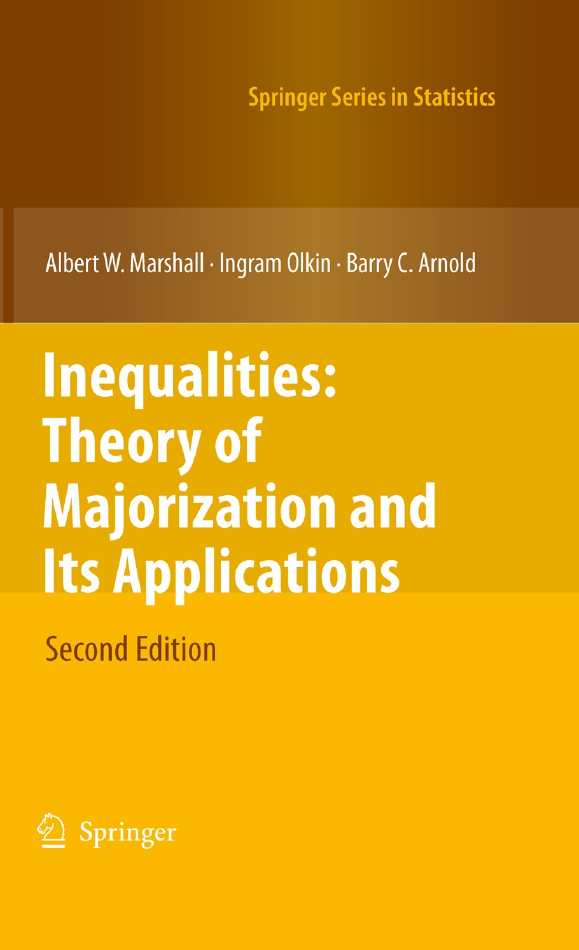
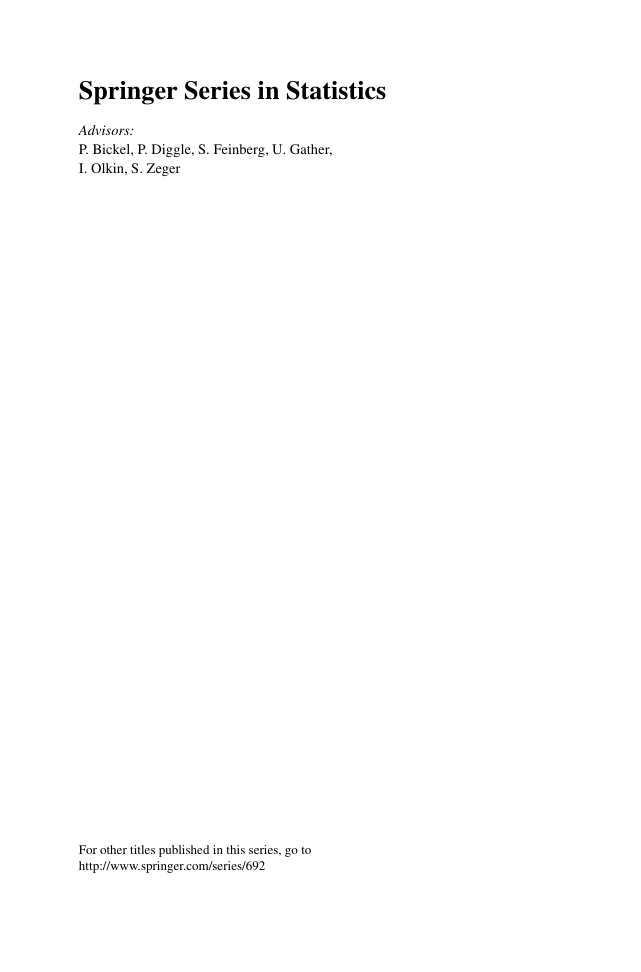

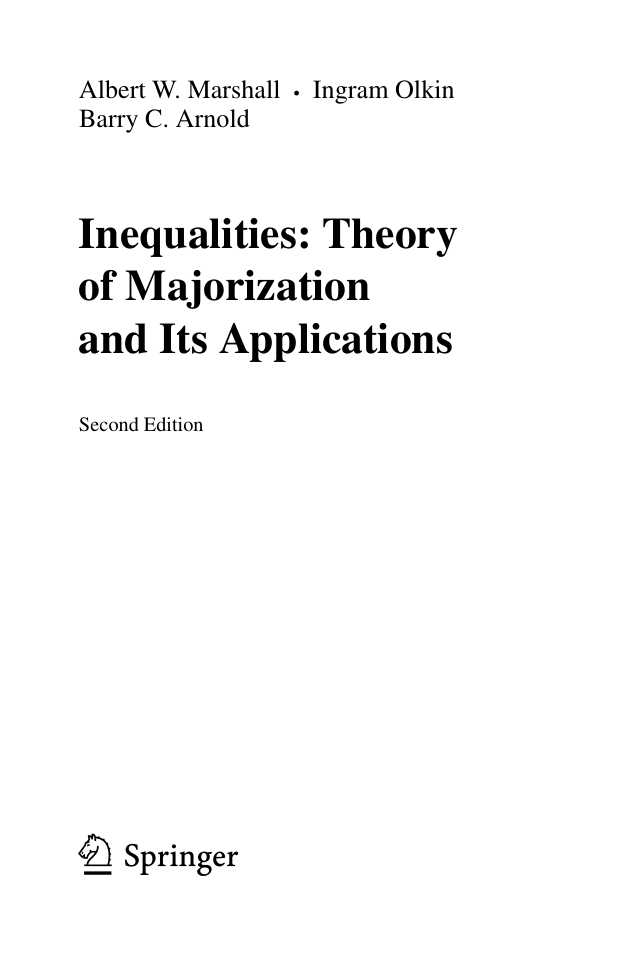
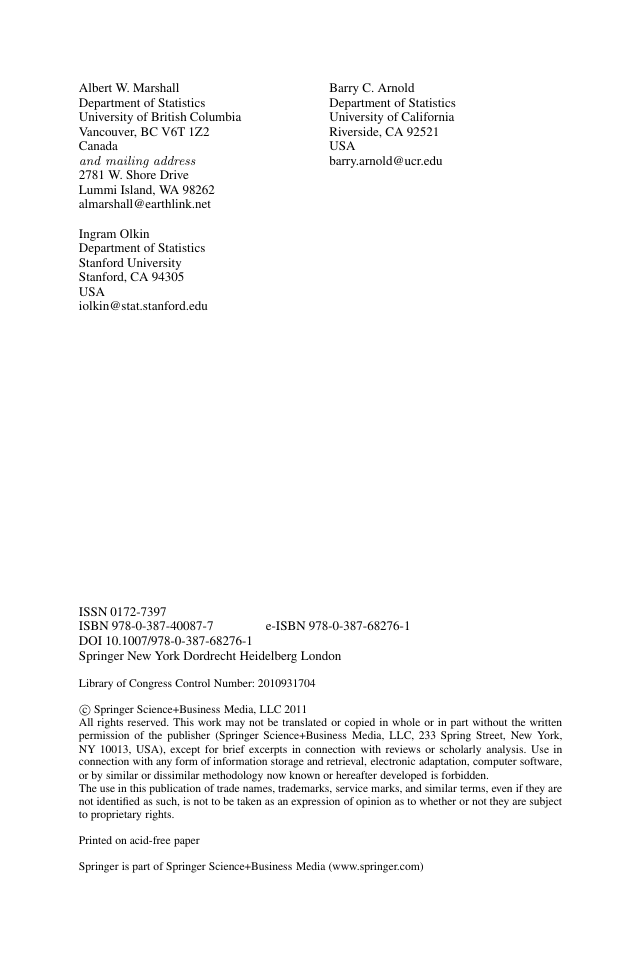


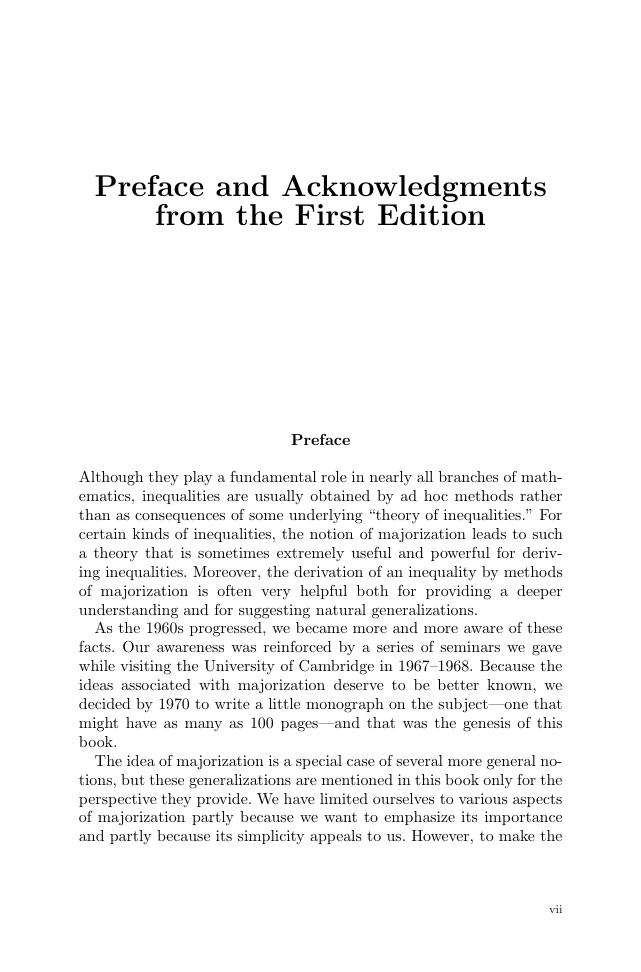








 2023年江西萍乡中考道德与法治真题及答案.doc
2023年江西萍乡中考道德与法治真题及答案.doc 2012年重庆南川中考生物真题及答案.doc
2012年重庆南川中考生物真题及答案.doc 2013年江西师范大学地理学综合及文艺理论基础考研真题.doc
2013年江西师范大学地理学综合及文艺理论基础考研真题.doc 2020年四川甘孜小升初语文真题及答案I卷.doc
2020年四川甘孜小升初语文真题及答案I卷.doc 2020年注册岩土工程师专业基础考试真题及答案.doc
2020年注册岩土工程师专业基础考试真题及答案.doc 2023-2024学年福建省厦门市九年级上学期数学月考试题及答案.doc
2023-2024学年福建省厦门市九年级上学期数学月考试题及答案.doc 2021-2022学年辽宁省沈阳市大东区九年级上学期语文期末试题及答案.doc
2021-2022学年辽宁省沈阳市大东区九年级上学期语文期末试题及答案.doc 2022-2023学年北京东城区初三第一学期物理期末试卷及答案.doc
2022-2023学年北京东城区初三第一学期物理期末试卷及答案.doc 2018上半年江西教师资格初中地理学科知识与教学能力真题及答案.doc
2018上半年江西教师资格初中地理学科知识与教学能力真题及答案.doc 2012年河北国家公务员申论考试真题及答案-省级.doc
2012年河北国家公务员申论考试真题及答案-省级.doc 2020-2021学年江苏省扬州市江都区邵樊片九年级上学期数学第一次质量检测试题及答案.doc
2020-2021学年江苏省扬州市江都区邵樊片九年级上学期数学第一次质量检测试题及答案.doc 2022下半年黑龙江教师资格证中学综合素质真题及答案.doc
2022下半年黑龙江教师资格证中学综合素质真题及答案.doc